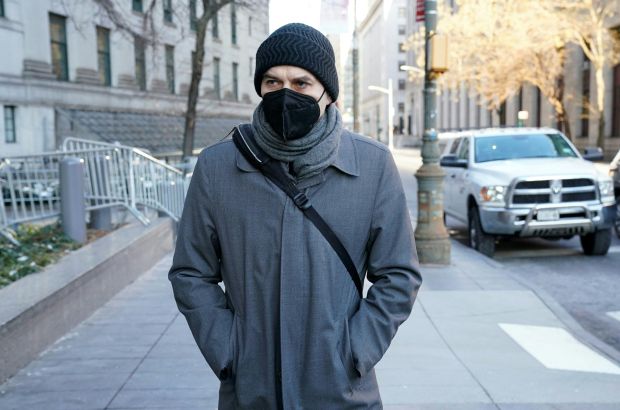A Manhattan jury heard closing arguments Tuesday in former Alaska Gov. Sarah Palin’s defamation case do-over against The New York Times, a high-stakes suit that First Amendment advocates worry could lead to the paring away of protections for the press.
Palin, who got another chance to try the case she lost in 2022 when New York’s Court of Appeals last year found errors plagued the first trial and revived it, alleges in her suit that an inaccuracy in a June 2017 Times editorial damaged her reputation.
The editorial, “America’s Lethal Politics,” argued heated political rhetoric could influence gun violence in the U.S. after a gunman opened fire at a congressional baseball game, wounding House Majority Leader Rep. Steve Scalise (R-La.).
Former Times editor James Bennet added the details to the writer Elizabeth Williamson’s article about a digital graphic put out by Palin’s political action committee in 2011 before former Rep. Gabby Giffords (D-Az.) was shot and paralyzed in a supermarket parking lot. He inaccurately described the graphic as featuring stylized crosshairs over Giffords and other Democratic officials when it depicted crosshairs over their electoral districts.

On Tuesday, a lawyer for The Times, Felicia Ellsworth, asked the jury to reject Palin’s arguments as “just another opportunity to take on the fake news.” Palin’s lawyer, Ken Turkel, said the error was not an “honest mistake about a passing reference,” but for Palin, “a life changer.” He said the newspaper had greater responsibility than other media outlets as “the world’s most authoritative news organization.”
“If someone is going to lie about you, you cannot pick a worse organization,” he said. He added that the editorial came when Palin was not running for office or otherwise in the spotlight but just “trying to live her life” and make money doing speaking engagements.
Ellsworth noted that Palin had not requested damages to repay supposed lost earnings for the engagements or anything at all.
“She’s not seeking those damages because she doesn’t have them,” the lawyer said. “She hasn’t hired anyone to fix the supposed harm of her reputation. She didn’t identify a single person who told her they believed she caused the Arizona shooting as a result of the 2017 editorial. She did not identify a single person who has … thought less of her because of the editorial. She offered no witnesses to show she was harmed.”
Within 14 hours, the error was fixed. A correction said that no link had ever been established between political rhetoric and the shooting of Giffords and noted, “the editorial also incorrectly described a map distributed by a political action committee before that shooting. It depicted electoral districts, not individual Democratic lawmakers, beneath stylized cross hairs.”

Turkel said The Times’s decision not to name Palin in the correction was part of the reason she brought suit, saying doing so would have been “common respect.”
“She just doesn’t matter to them,” he said. “As we sit here today, that is still the last correction up there.”
Turkel, who represented Terry Bollea, known as Hulk Hogan, in his Silicon Valley-funded defamation suit against Gawker Media that led to the shuttering of the popular gossip blog before it relaunched years later, seemed to acknowledge that Bennet may not have known the detail was inaccurate. He said the editor should have, having had the relevant information “at his fingertips.”
Ellsworth said Palin’s lawyers had failed to prove Bennet acted with “actual malice,” meaning he knew the detail was false but included it anyway. She noted that fact-checkers and editors had interpreted it differently.
“James Bennet, Elizabeth Williamson, Linda Cohen and the other editors and fact checkers who worked on the editorial did not think that the editorial was saying the map caused the shooting, but once they realized it was being read that way, they acted quickly,” Ellsworth said, noting Bennet woke at 5 a.m. the morning after the piece went up and told his team to determine the facts as fast as possible.
“If he was avoiding learning the truth, you’d expect him to keep his head in the sand as long as possible,” Ellsworth said. “These are not the actions of a person who was purposely avoiding the truth.”

As in Hogan’s suit, First Amendment advocates worry the suit has been brought as a vehicle to ultimately get the U.S. Supreme Court to overturn a 1964 landmark ruling in a case also involving The Times, which set a high bar for public officials who try to sue journalists. Currently, they have to prove an error was intentional.
It comes as the Trump administration has aggressively ramped up attacks on the media, filing mammoth lawsuits against ABC and CBS over coverage Trump didn’t like, seeking to curtail access for The Associated Press for refusing to capitulate to his editorial preferences, and expanding White House access to non-traditional, right-wing media outlets and bloggers who support him.
Originally Published:

